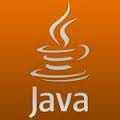In wrote a bit about Virtual extension methods here and here. I thought of going over this implementation in the JDK, so that it will give us an idea of how these can be applied. also read: Java 8.0 Tutorials Java 7.0 Tutorials New Features in Java 7.0 G1 Garbage Collector in Java 7.0 As …
JavaFX
Developing a Simple Todo Application using JavaFX, Java and MongoDB- Part-3
In the previous post we created the UI for adding a new Todo where in we used a Tab, TabPane and added the required controls- TextField and a Button to the Tab. also read: Java FX Tutorials Developing a Simple Todo Application using JavaFX, Java and MongoDB Using JavaFX Chart API to add charts to …
Developing a Simple Todo Application using JavaFX, Java and MongoDB- Part-2
In my previous post: I setup the objective of our sample application and named it as TodoFX (I know lot of you would have missed the naming part, lack of creativity in naming drives me create portmanteau of technology and usage of app) Created the back end for our sample application, in the process we …
Developing a Simple Todo Application using JavaFX, Java and MongoDB- Part-1
Over a series of 2 posts or so, I would try and show how to develop a simple Todo Desktop application using JavaFX as the Frontend, and the well known NoSQL database MongoDB as the Backend and using Java as the glue between both of them. The main aim of developing this application is to …
Using JavaFX Chart API to add charts to Swing applications
In our previous post we looked at how we can embed JavaFX components into Swing applications. As Java Swing lacks Charting API, we can make use of the JavaFX Chart API and not depend on other 3rd party libraries like JFreeChart and others. The javafx.scene.chart is the package which contains all the charting related classes. …
Embedding HTML into Java Swing Applications
HTML in Swing applications? Yes, you have read it right. Swing doesn’t provide components to embed HTML and I have seen lot of people asking how can we add html content in Swing applications. Your concerns have been addressed by the latest release of JavaFX which is JavaFX 2.0. You might wonder what this JavaFX …


